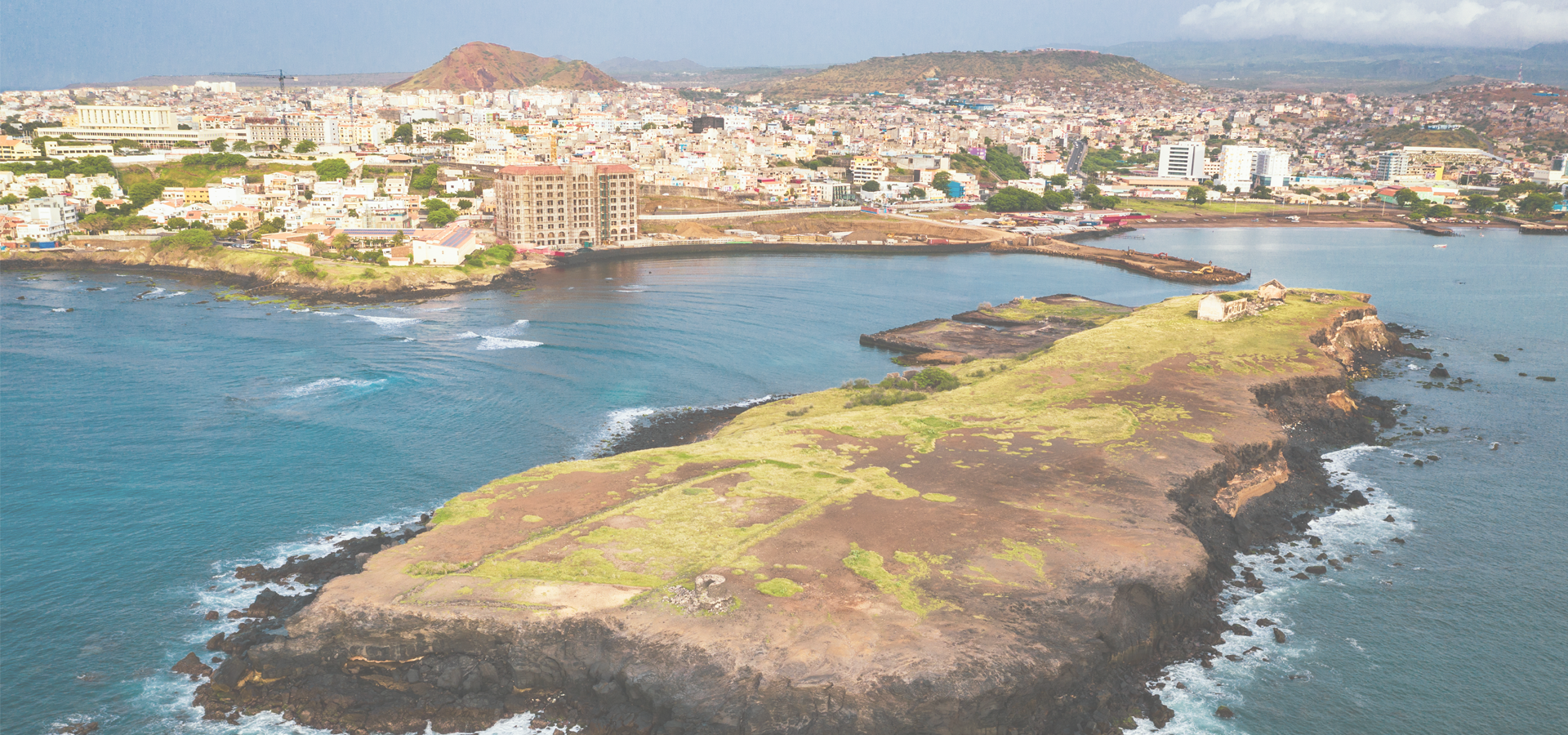Brava, Sotavento Islands, Cape Verde
🇨🇻 Brava is an island in Cape Verde, in the Sotavento group. At 62.5 km² (24.1 sq mi), it is the smallest inhabited island of the Cape Verde archipelago, but at the same time the greenest. First settled in the early 16th century, its population grew after Mount Fogo on neighbouring Fogo erupted in 1680. For more than a century, its main industry was whaling, but the island economy is now primarily agricultural.
History Brava was discovered in 1462 by the Portuguese explorer Diogo Afonso. There is no evidence of human presence on the Cape Verde islands before the arrival of the Portuguese. Around 1620 the population of Brava started with the arrival of settlers from Madeira and the Azores. Settlement of Brava took a rise in 1680 when it received many refugees from the nearby larger island of Fogo after its volcano erupted and covered the island with ash. Frequent pirate attacks forced the population towards the interior of the island, where the town Nova Sintra was founded around 1700.
Around 1720, the fungus Roccella tinctoria was discovered, which was traded as a textile dye. From the end of the 18th century, whaling ships from North America started hunting whales around the Azores and the Cape Verde Islands. They used the harbours of Brava (Fajã de Água and Furna) to stock up on supplies and drinking water. They hired men from Brava as sailors, and several of these men from Brava settled around the Massachusetts whaling port of New Bedford.
Geography The island of Brava is 10.5 km long (north to south) and its width is 9.3 km. Its area is 62.51 km² (24.14 sq mi). Practically the whole island is a stratovolcano. It lies in the lee of the enormous Fogo volcano. Volcanic activity on the island has been mainly located along three lines, which all intersect at the crest of ground that forms the highest part of the island. Brava has no documented historical eruptions, but its youthful volcanic morphology and the fact that earthquake swarms still occur indicate the potential for future eruptions; its last eruption was during the Holocene era. 13% of the island area is forested.
North of Brava are several uninhabited islets; the largest ones are Ilhéu de Cima and Ilhéu Grande. Monte Fontainhas is the highest point on the island, reaching 976 metres elevation.
Municipality Administratively, the island of Brava is covered by one municipality, Concelho da Brava. This municipality consists of two freguesias (civil parishes): São João Baptista and Nossa Senhora do Monte. The municipal seat is the city Nova Sintra.
Population The island's main town is Nova Sintra. The island's two parishes São João Baptista and Nossa Senhora do Monte are subdivided into 16 population zones for statistical purposes: São João Baptista • Cachaço • Cova Rodela • Furna • João da Noly • Lem • Mato Grande • Nova Sintra (city) • Santa Bárbara • Vinagre
Nossa Senhora do Monte • Campo Baixo • Cova Joana • Fajã de Água • Mato • Nossa Senhora do Monte (town) • Tantum • Tomé Barraz.
Economy The economy of the island is mainly based on (irrigated) agriculture and fishing. Main agricultural goods include coffee, potatoes including sweet potatoes, corn (maize), banana and sugar cane.
Attractions • Nova Sintra, a town with a museum, traditional Portuguese architecture, several churches and shops. • Fajã de Agua, a small harbour on the West coast with a natural swimming pool. • Nossa Senhora do Monte, a village in the mountains with a pilgrimage church. • Cova Rodela, a village in the mountains with a dragon tree in its main street.
Sport There are several football clubs on Boa Vista, organised in the Brava Regional Football Association.
Infrastructure The Esperadinha Airport, inaugurated in 1992, was closed in 2004 because of persisting strong winds. The village of Furna has a commercial port, the other port is Fajã de Água which is only used for fishing. Ferries to the islands of Fogo and Santiago depart from Furna. On Brava the villages may be reached by "Aluguer" bus. There is no fixed schedule, as the aluguers travel only when there are sufficient passengers. A few taxis are available as well.
Cape Verde Time

🇵🇭 Dinalupihan 14.869
🇹🇭 Doem Bang Nang Buat 14.85
🇬🇹 Quetzaltenango 14.837
🇵🇭 Olongapo City 14.83
🇵🇭 Santa Maria 14.82
🇸🇳 Guédiawaye -17.394
🇲🇷 Nouadhibou -17.04
🇵🇹 Ponta Delgada -25.673
🇵🇹 Angra do Heroísmo -27.217
🇧🇷 João Pessoa -34.864
🇧🇷 João Pesso -34.867
🇧🇷 Abreu e Lima -34.904
Locations Near: Brava -24.7,14.8667
🇨🇻 Praia -23.521,14.923 d: 126.8
🇨🇻 Mindelo -24.967,16.85 d: 222.4
🇸🇳 Dakar -17.441,14.674 d: 780.8
🇸🇳 Pikine -17.4,14.75 d: 784.8
🇸🇳 Guédiawaye -17.394,14.776 d: 785.4
🇸🇳 Rufisque -17.267,14.717 d: 799.3
🇸🇳 M'bour -16.967,14.417 d: 833.4
🇸🇳 Thiès -16.917,14.783 d: 836.7
🇬🇲 Kanifing -16.681,13.443 d: 878.9
🇬🇲 Serrekunda -16.678,13.435 d: 879.4
Antipodal to: Brava 155.3,-14.867
🇸🇧 Honiara 159.95,-9.433 d: 19227.5
🇦🇺 Mackay 149.184,-21.143 d: 19063.9
🇵🇬 Buka 154.667,-5.417 d: 18962
🇦🇺 Townsville 146.818,-19.258 d: 18990
🇵🇬 Port Moresby 147.193,-9.459 d: 18948.6
🇦🇺 Cairns 145.771,-16.923 d: 18970.8
🇦🇺 Rockhampton 150.504,-23.374 d: 18943.6
🇦🇺 Gladstone 151.25,-23.85 d: 18929.8
🇦🇺 Hervey Bay 152.855,-25.29 d: 18828.4
🇦🇺 Fraser Coast 152.831,-25.291 d: 18827.7